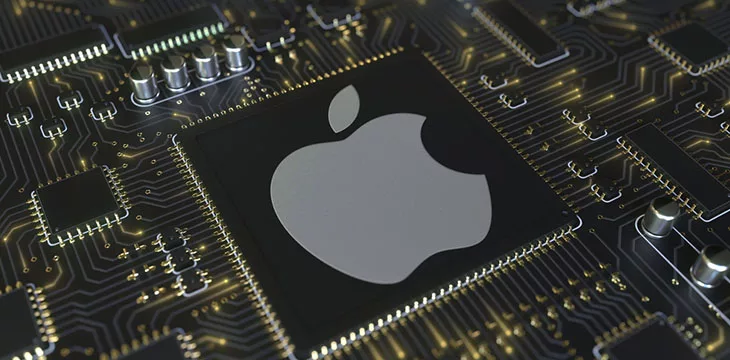|
Getting your Trinity Audio player ready...
|
Apple (NASDAQ: AAPL) has announced the launch of MLX, an open-source framework for artificial intelligence (AI) development, joining the trend of Big Tech firms with model libraries for machine learning.
Apple’s MLX allows developers to build large language models (LLMs) compatible with Apple Silicon and MLX Data, its deep learning model library. Apple disclosed on GitHub that the new framework is a masterstroke to solve its compatibility and performance issues, taking inspiration from existing frameworks such as PyTorch, ArrayFire, and Jax.
However, Apple stated that its MLX goes the extra mile with improved functionalities, which includes using familiar APIs based on Python and C++. Per the GitHub announcement, Apple says its MLX’s APIs can simplify building complex models, leveraging its similarities with PyTorch.
Other technical features integrated into MLX include dynamic graph construction, lazy computation, and composable function transformations, which Apple says is expected to simplify the process.
The company disclosed that MLX’s architecture stands apart by using a unified memory model. MLX’s arrays exist in shared memory, meaning that operations can be carried out on supported devices without the hassle of moving data, according to Apple.
Through a unified memory feature, developers do not need to rely on powerful PCs for machine learning operations, as they can use their MAC’s RAM. Apart from the technical improvements, Apple says MLX is designed to be user-friendly but powerful enough to train and deploy AI models.
“The design of the framework itself is also conceptually simple,” said Apple. “We intend to make it easy for researchers to extend and improve MLX with the goal of quickly exploring new ideas.”
Despite the functionalities, developers have expressed concerns over the porting of custom models, hinting at Apple’s streak of operating a closed ecosystem.
“It’s exciting to see more tools like this for working with tensor-like objects, but I really wish Apple would make porting custom models in a high performance manner easier,” a developer remarked on Hacker News.
Apple moves with generative AI
In July, it was revealed that Apple was throwing its weight behind developing an AI chatbot—dubbed Ajax—for internal use by employees for product prototyping. There are no concrete plans for a commercial release in the mold of ChatGPT or Bard, with experts pointing to the use of Google Cloud as a signal for the company’s intention to keep the offering in-house.
The company has been bolstering its ranks with machine learning and blockchain technology experts, hinting at a possible integration of both emerging technologies. Apple’s reentry into AI sees it play catchup to OpenAI, Google (NASDAQ: GOOGL), and Meta (NASDAQ: META) despite its first-mover advantage following the launch of Siri in 2011.
In order for artificial intelligence (AI) to work right within the law and thrive in the face of growing challenges, it needs to integrate an enterprise blockchain system that ensures data input quality and ownership—allowing it to keep data safe while also guaranteeing the immutability of data. Check out CoinGeek’s coverage on this emerging tech to learn more why Enterprise blockchain will be the backbone of AI.
Watch IEEE COINS Conference: Intersection of AI & blockchain

 07-04-2025
07-04-2025 





